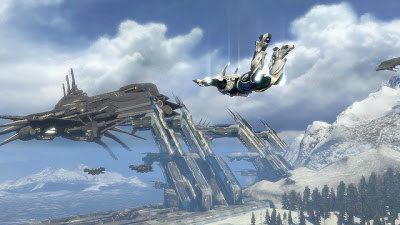 |
| Halo? No. Section 8: Prejudice! |
Take Brink, for example: this was a game that was billed as something new and exciting, a groundbreaking title that would change the way first-person shooters worked. It was class-based, allowed customisation of your character and your weapons, and featured freerunning. It was as if Splash Damage took cues from all the best shooters and combined them into one game.
Prejudice is actually a sequel to the 2009 title Section 8, also released by TimeGate Studios. Section 8 was a fairly mediocre title that was a largely multiplayer-only affair (something I find never speaks well of a game, especially when it’s a disc-based release). Still, the game had its own style and some interesting gameplay elements people hadn’t seen since Tribes – namely, the inclusion of jetpacks. The game pitted you in up to 32-player matches against both other players and bots (something that truly needs to make a comeback) where you needed to complete objectives to receive victory points. It was a very straightforward game that did little that hadn’t been seen before and was critically received with very little fanfare and middling reviews.
 |
| Did I forget to mention that you enter the battlefield by airdrop? Because that’s one of the best parts. |
When it comes to first-person shooters, Section 8: Prejudice may be the best value for your money until Battlefield 3 is released. For an extremely reasonable $US15, you receive a first-person shooter with a campaign that rivals the length and scope of some of the blockbusters – the campaign of Call of Duty: Black Ops, for instance, averages at somewhere around six hours of game time. Prejudice meets that length square on, which is pretty impressive for a title that is only available through digital distribution.
– Nick J
What’s your favourite downloadable PSN games? Let us know on our forums!







